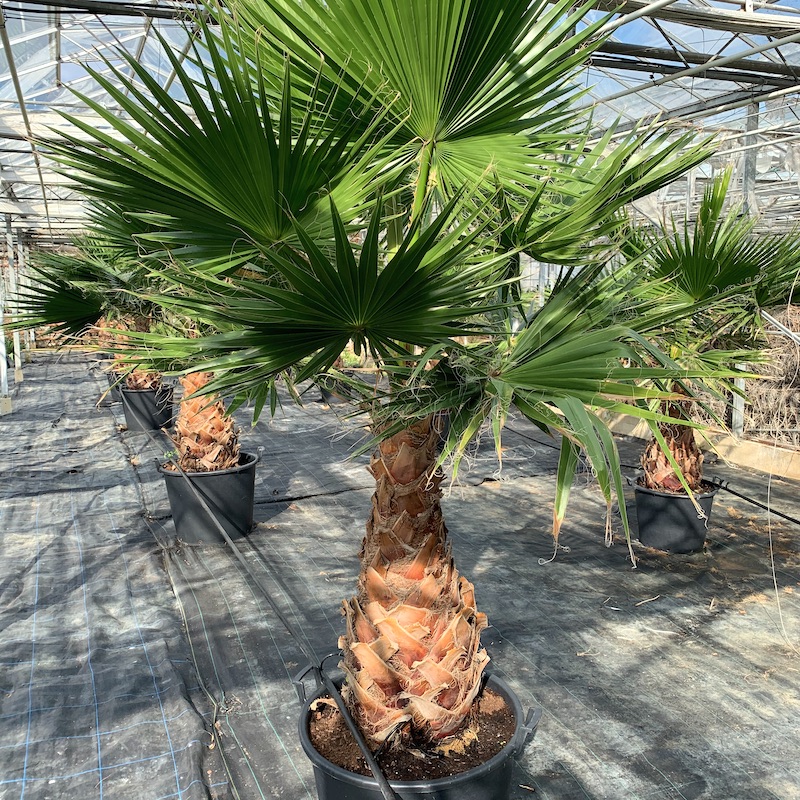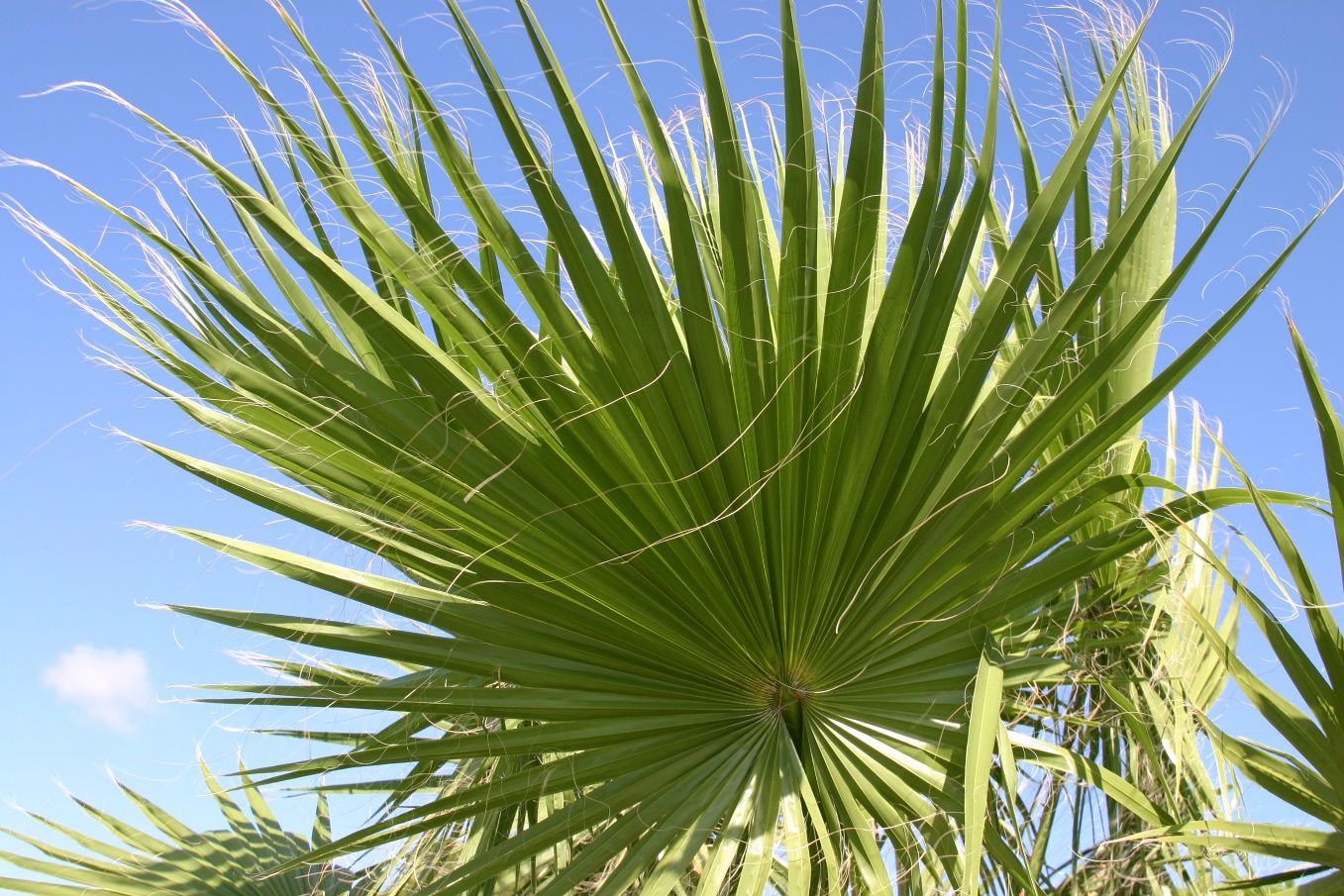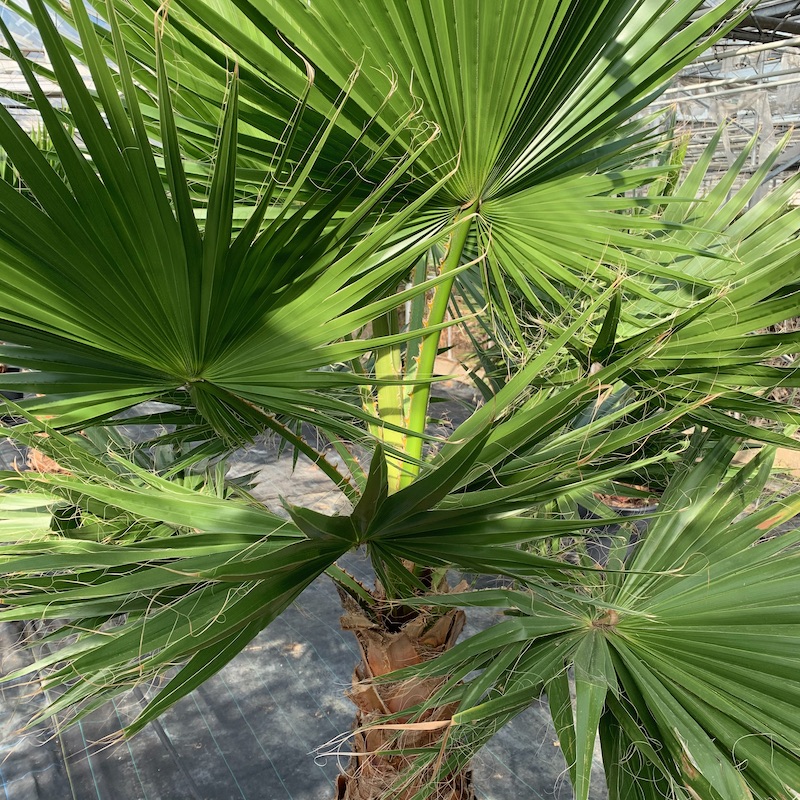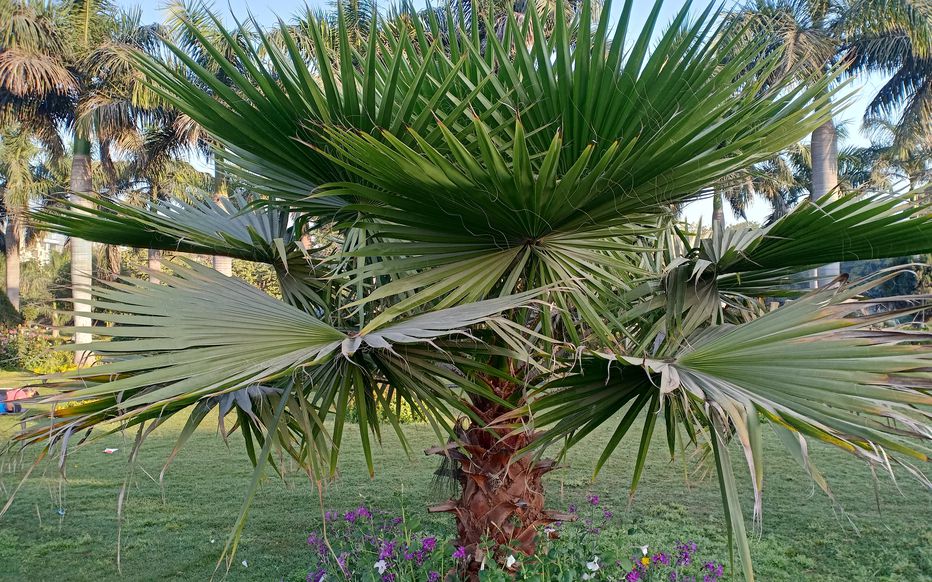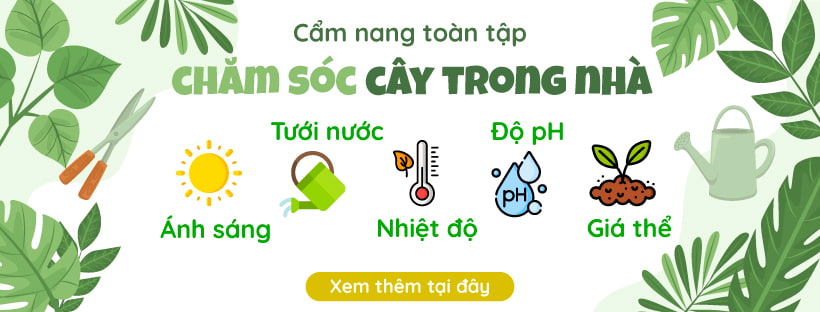Washingtonia robusta
| Surname | Arecaceae (Areca, Palm) |
|---|---|
| Leaf color | xanh lá |
| Leaf size | vừa-lớn |
| Tăng trưởng | average |
| Diseases & Pests | leaf burn, fungus, aphids, root rot, leaf rot, soft rot |
Washingtonia robusta easily recognizable by its large fan-shaped leaves, fringed edges and slender stems, 15-20m tall. The tree is often planted in parks, hotels and resorts to create a unique tropical landscape highlight.
Note: The above information is only relative, the living conditions of the tree also depend a lot on other objective factors.
How to grow and care for Washingtonia robusta
Difficulty of growing palm trees
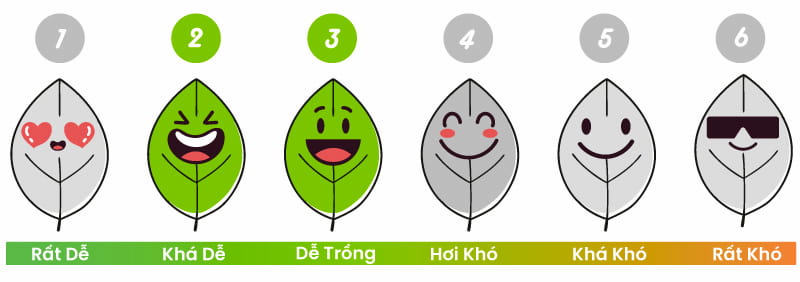
Difficulty: 2-3/6
Palm trees do not require much care from the grower. Palm trees only need a moderate level of care, adequate watering, and their nutritional requirements are also quite simple.
Suitable soil for palm, areca

Palms prefer loam or loam soil, rich in organic matter and fairly well-drained. Most potting mixes, rice husk or peat moss, with a little coarse sand added will do. Generally, a compact, slightly water-retaining soil is sufficient.
Suitable light for planting palm, areca
![]()
Palm trees are light-loving plants, so you should plant them in places with direct light, or ideally strong indirect light.
Planting temperature palm, areca
![]()
Watering palm, areca
![]()
Palm trees and areca palms do not need much water. If planted indoors, do not water too much, just water 3 times a week and the tree will grow well.
Suitable humidity for palm, areca
![]()
The ideal humidity for palm trees is usually between 50% and 60%, as this is the humidity level that simulates the natural tropical environment where they grow best.
pH for plants palm, areca

The ideal pH range is 6.0 - 7.0 pH. A slightly acidic or neutral soil pH is ideal.
Pet-friendly
![]()
Most popular Palms are pet friendly. However, limit your pet's exposure to the leaves.
Indoor Plant Care Guide
The most important and basic knowledge about growing plants indoors:


